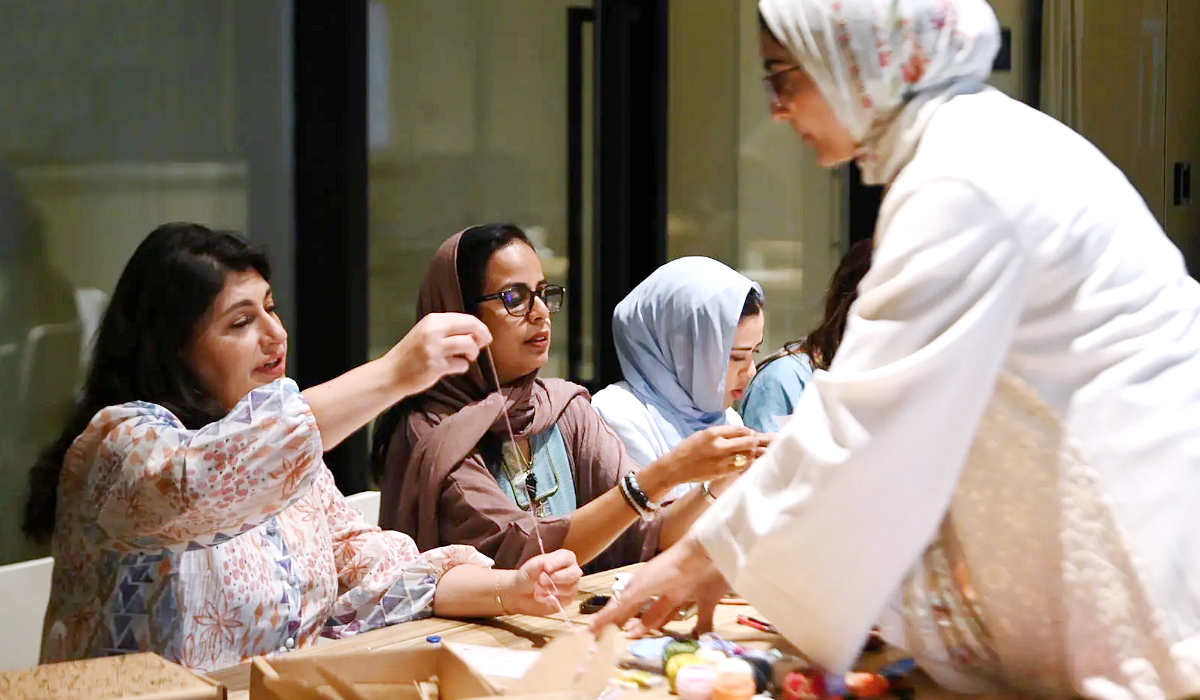JEDDAH: As Saudi Arabia is heading towards achieving an environmentally friendly and better future for the planet, many are inspired to promote sustainability such as the King Abdul Aziz Center for World Culture (Ithra).
The latest exhibit at the Ithra Museum, Terra, which means “fertile soil” in Arabic, aims to educate visitors on the perilous impact of humans on the planet as well as inspire conversations on the topic.
“This is not a political movement,” Farah Suhail Abushullaih, head of the Ithra Museum, told Arab News.
“It ignites curiosity and understanding for a world issue through creativity and art. It examines this relationship between humans and earth and allows visitors to reflect on their abilities to make positive impacts on the planet.”
From one’s surroundings occupied by compelling visual effects to walking through a tunnel made of mountains of plastic, the international artists of Terra take visitors on an eye-opening and immersive journey to rekindle their love for the planet.
The artists created with recycled materials and used different methods such as virtual and augmented realities.
“Through different installations and artworks, each artist brought his or her unique skills and ideas and implemented them differently to tackle these environmental challenges,” Abushullaih said.
“Some of the challenges that are presented include extensive consumption of plastic bags, the effect of climate change on planktons, the damaged coral reefs caused by overfishing, and even the challenge of water scarcity.” 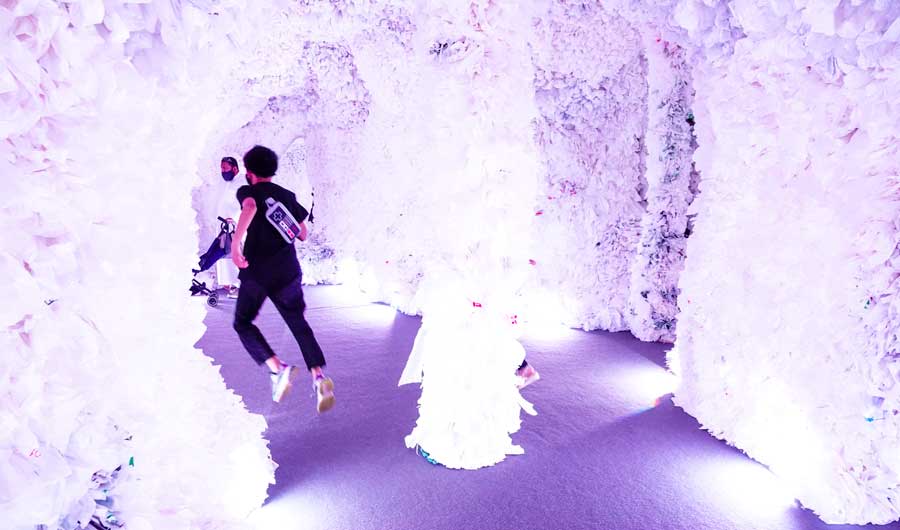
Daniel Popper, a multidisciplinary artist known globally for his sculptures and public art installations, has an entrance piece that is a metaphor for guests entering the heart of nature.
“He planted a huge monument by the gate with an installation made of upcycled material. He did this to create a gate to knowledge and form an invitation to connect and understand nature,” Abushullaih said.
Another display is from Basia Goszczynks, who creates art with recycled materials she finds at the beach, on the streets, and at trash facilities. Goszczynks was behind the installation of a cave made up of 80,000 used plastic bags.
The piece is meant to incite visitors to visually experience half of a second of the world’s consumption of plastic bags.
“The idea is to create a shocking moment that empowers the visitor to adopt a new behavior with regards to dealing with single-use plastics,” Abushullaih said.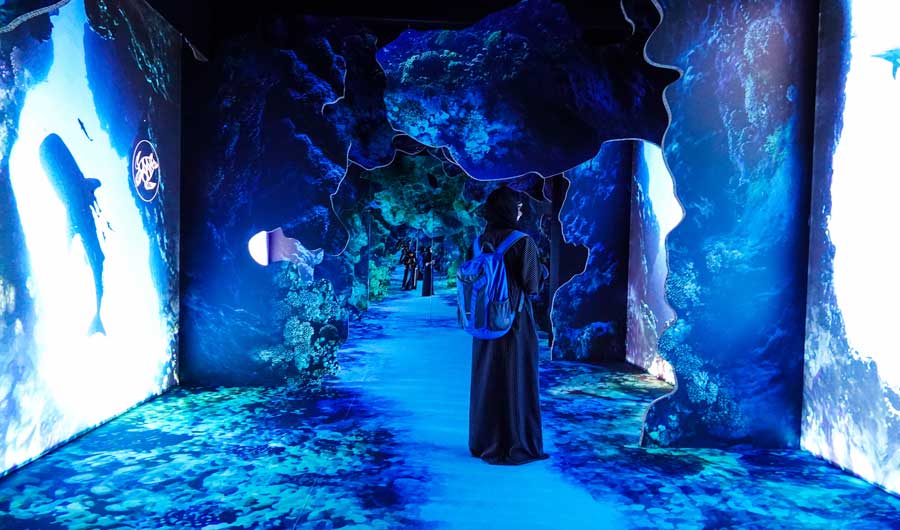
Terra parades impactful optical illusions and immersive and interactive technologies provided by META, an international experience product company, which combines intelligence, craft, and artistry with immersive technologies.
“META’s contribution is the Oxygen Oasis installation which tells the story of how oxygen is created on earth through the use of 3D projection mapping,” Abushullaih said.
Terra was first exhibited in New York City at Arcadia Earth, a next-generation art exhibition and extended reality experience designed to reignite the conversation around the most pressing environmental issues. Terra has now found its way to Ithra in Dhahran through the center’s collaboration with Arcadia Earth.
It was created by Valentino Vettori, who is an experiential artist with more than 20 years of experience dedicated to reimagining the way people interact and engage with the environment. Arcadia Earth is also the first multi-channel platform to provide an opportunity for individuals to experience the troubles facing our planet through different mediums of art and technology.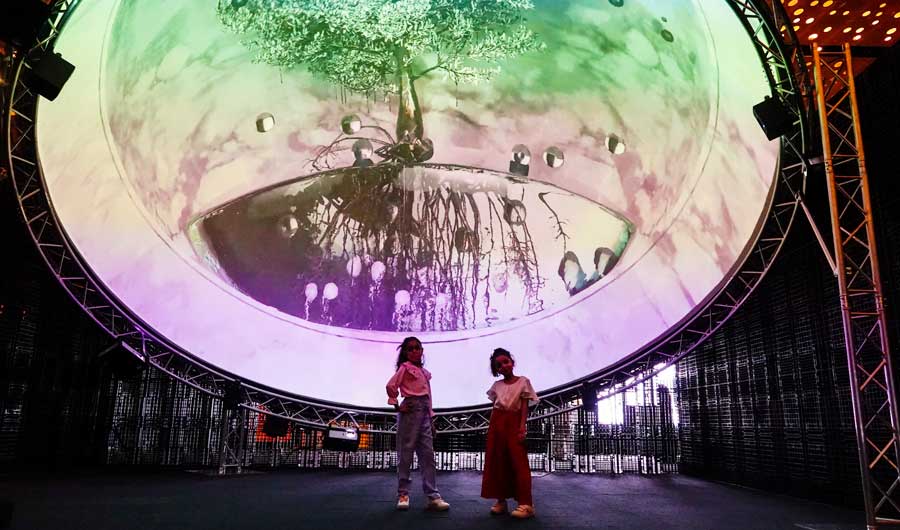
“It is a platform that allows sustainability artists to express their concerns with the public and provides a space for open-mindedness with their unique storytelling approach,” Abushullaih said.
Ithra has chosen a more practical way to promote Terra by taking it outside of the center’s building and onto the streets “because this is specifically about environmental sustainability, so we extended it outwards. Through working with our volunteer programs, we acted in different ways to practice sustainability like cleaning the streets or beaches to create positive and tangible impacts.”
A different aspect of Terra that makes it unique to other exhibits of sustainability is its holistic approach.
“It presents challenges as well as solutions through subtle suggestions, and little bits of knowledge for the visitor to take and possibly incorporate them in their daily practices to help improve the environment and reduce the harm,” Abushullaih said.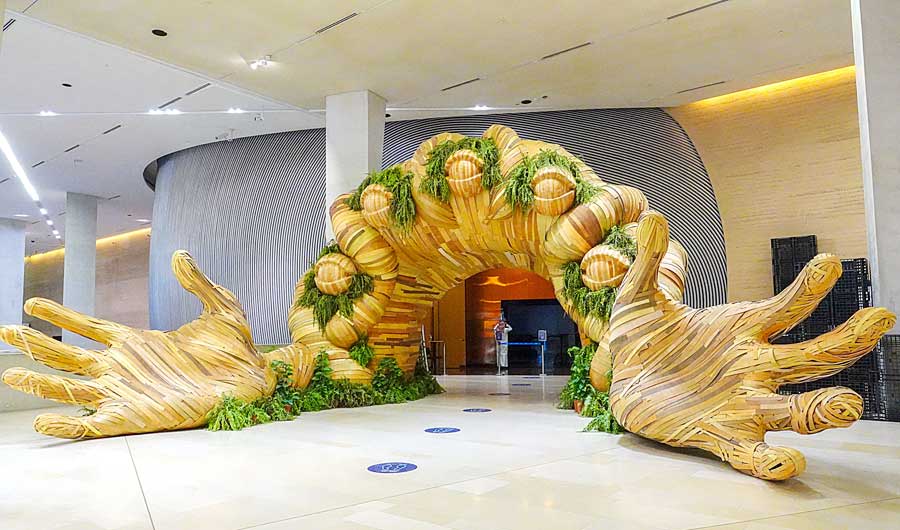
The head of the Ithra Museum added that art is a great tool to raise awareness on various issues.
“Artists, throughout history, have always shown interest in the environment in their work,” Abushullaih said.
“In the last century, a specialized approach to art has emerged to shed light on these threats. Art is a great means to provide knowledge and it is a powerful tool to reach the public and make difficult and harsh information easy to digest.”
The exhibit is open to all age groups and will run until the end of September. It accommodates both Arabic and English speakers. For more information, visit the website https://www.ithra.com














